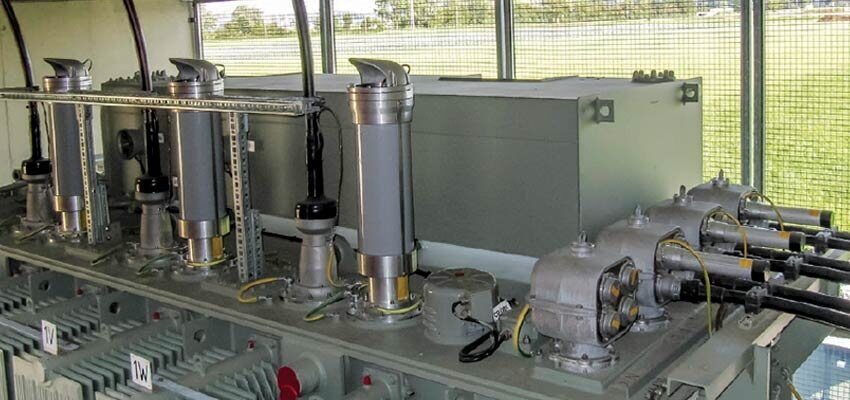
The closer, the better: The best protection of power transformers with the pluggable HV CONNEX surge arrester
Abstract At home many people unplug their electronic devices if a thunderstorm is approaching to protect them from damage due to lightning strikes. In the...
byMyriam KOCH, Ruben GRUND, Marcel HECKEL

Abstract
At home many people unplug their electronic devices if a thunderstorm is approaching to protect them from damage due to lightning strikes. In the power grid this is not possible. It is thus necessary to protect the apparatus by suitable measures, e.g. the installation of surge arresters. In the grid, not only do overvoltages occur due to lightning, but also other types of hazardous voltage increases can cause severe problems. Pfisterer has therefore developed the HV CONNEX surge arrester for applications with system voltages up to 170 kV. The surge arrester is easy to install, has a space-saving design, and ensures optimal protection of encapsulated transformer arrangements.
Keywords: surge arrester, pluggable, overvoltage, protection
Lightning is an impressive natural phenomenon. Very strong lightning strikes have the explosive power of several kilograms of TNT and are thus highly destructive. But lightning strikes are not the only risk for the power grid – temporary overvoltages and switching impulse voltages can also cause severe trouble for the insulation of the components. Equipment which has high replacement cost and long lead time in particular therefore needs protection from failure.
Overvoltages and their insulation
Various types of overvoltages are known in high voltage installations. They differ not only in magnitude but also according to the length of the event. Temporary overvoltages are voltages with an elevated level at operating frequency and can last up to several seconds. Switching operations in substations lead to so-called switching impulse voltages and are typically in the range of milliseconds. Lightning impulses originate from weather phenomena and are typically in the range of microseconds. While the insulation of the installed devices in the grid has to be dimensioned to withstand the electrical stress during temporary overvoltages, it is not feasible from the economical point of view to ensure that, for example, the insulation of transformers withstands switching and lightning impulses. Instead, surge arresters are installed at specific points in the grid to protect them.
In the case of lightning impulses in particular, the occurring overvoltages have to be considered as travelling waves. Talking of power transformers, the reflections of these waves result in doubling the voltage at the transformer terminals (more details in the info box). Placing a surge arrester in front of the transformer limits the maximum voltage of the incoming wave and hence, the resulting voltage at the transformer terminals. Besides the gradient of the incoming wave, the maximum voltage at the terminals depends strongly on the distance between the surge arrester and the apparatus to be protected. Thus, the shorter the distance, the better the protection.







